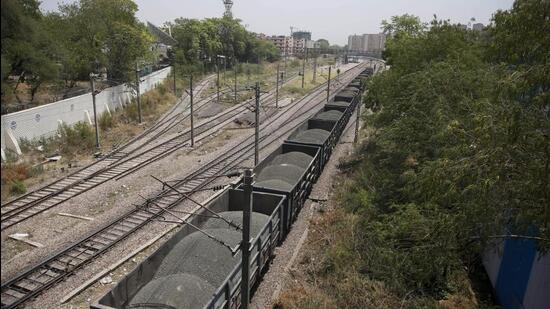Power shortage eases up but officials remain wary
Though the unusually hot summer has ensured demand for electricity remained high, the shortfall reduced in the past two days for the first time since April 1, power ministry data showed.
New Delhi: The power crisis in India has eased in the past two days. Although the unusually hot summer has ensured demand for electricity remained high, the shortfall reduced in the past two days for the first time since April 1, power ministry data showed on Tuesday, indicating emergency response by the authorities has started showing results.

On May 1, India’s peak power demand was 191,216 MW, but the shortfall was just 207 MW. Peak power shortage was this low last on March 20, when there was a shortfall of 274 MW against a peak demand of 186,640 MW. On May 2, peak power demand was 204,453 MW while the shortage was just 1,773 MW.

The improvement in power supply came after five days of high shortage between April 26 and 30, when the average deficit was 8,600 MW, with the highest recorded on April 28 at 10,778 MW. This had led to long outages in many parts of the country.
In April, daily average peak demand was 196,076 MW, while daily average shortage was 4,701 MW. But, in the first two days of May, the daily average peak demand was 197,835 MW, but the daily average shortage was just 990 MW, according to power ministry data analysed by HT. India’s peak power demand smashed records to touch 207,111 MW on April 29.
The decline in electricity shortfall was not only because heatwaves have temporarily eased, resulting in lower power consumption, but also due to an increase in coal production, faster turnaround time of cargo trains and states streamlining electricity generation and supply by increasing coal imports and buying power from exchanges, power ministry officials said.
State-run Coal India achieved the highest production of 534.7 lakh tonne in April, showing 6.02% growth, the coal ministry said on Tuesday. The previous record production was recorded in April 2019, when production was 450.29 lakh tonne. Similarly, coal offtake touched 570.55 lakh tonne in April, compared with the previous high of 540.12 lakh tonne in April last year.
“During the month of April, 2022, India’s total coal production stood at 661.54 lakh tonne. As per provisional statistics, while the total offtake of the coal sector was 708.68 lakh tonne during the month, the power sector offtake touched the figure of 617.2 lakh tonne in April. At the same time, offtake to the power sector from Coal India alone stood at 497.39 lakh tonne,” the coal ministry said in a statement.
The improvement took place a day after home minister Amit Shah called power minister RK Singh, coal minister Pralhad Joshi and railways minister Ashwini Vaishnaw to his residence to review the situation and address complaints by some states regarding lack of coal supply.
Several states have set their house in order, and have started importing coal for 10% blending and purchasing spot electricity from power exchanges, a power ministry official said, declining to be named.
There were also state-specific interventions made by the power ministry. In Haryana, which saw a severe power crisis in the past one week with outages lasting up to 10 hours, the ministry allotted an extra 300 MW and said it would allocate another 500 MW till May 15 as a temporary measure till the situation improves.
In Delhi, the power ministry agreed to supply as much power as required by the distribution utilities.
Despite state generation companies collectively owing ₹7,918 crore to Coal India, the coal and power ministry also decided to not restrict supply.
To be sure, the power situation continues to be precarious, power ministry officials said, urging states to further ramp up coal imports.
“States should have ordered 22 million tonne of imported coal for blending with domestic coal to ease the pressure on local supplies before the June-September monsoon season,” an official said on condition of anonymity. “But, orders only of up to 5 million tonne have been placed by the generation utilities of only about 4-5 states, which include Tamil Nadu, Maharashtra, Gujarat and Punjab.”
The Indian Railways has repaired 2,179 damaged wagons to carry more coal from mines to power plants at a cost of ₹150 crore, officials had said earlier. It has so far cancelled 42 passengers trains to make way for coal rakes. The national transporter increased its average daily loading of coal cargo trains to over 400 everyday, the highest in five years. A rake has up to 84 wagons.
Coal inventory was 21 million tonnes at power plants on May 1, enough to generate electricity for nine days, official data showed. On May 1, 83 of 150 power plants running on domestic coal had critically low coal stock and many of them cited lack of rakes as the key reason. Another 11 imported coal-based power plants had low levels of fuel.






